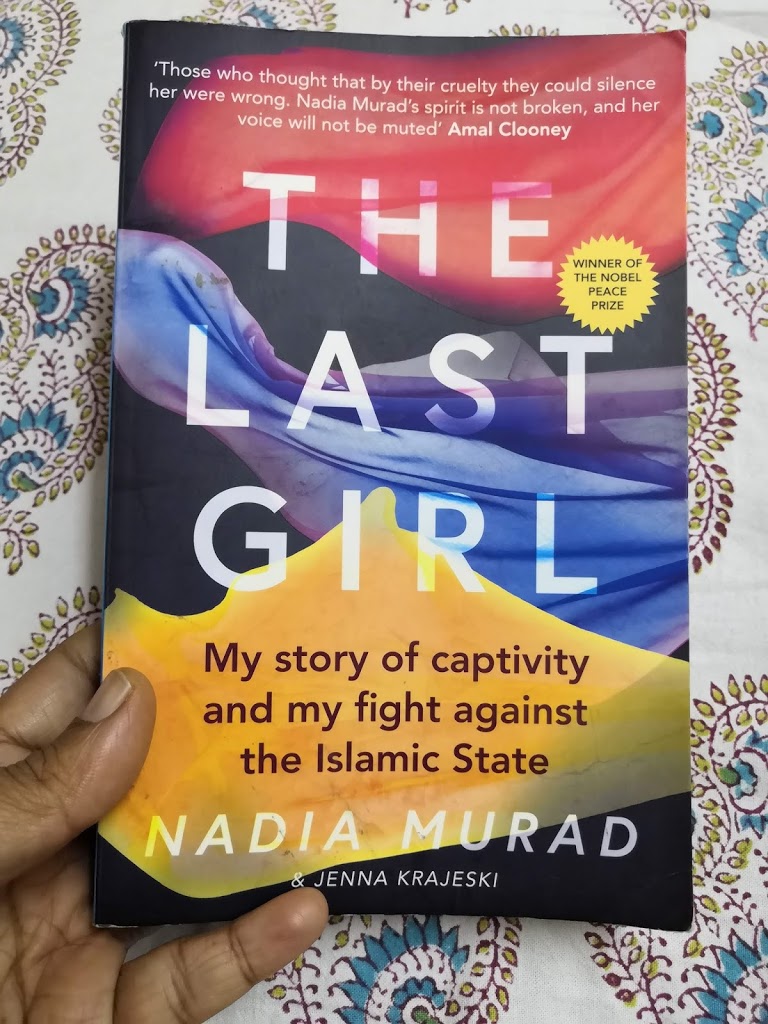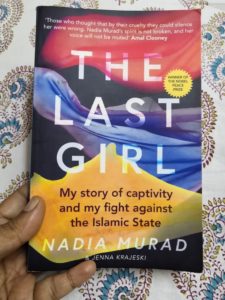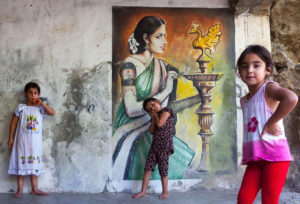The Last Girl (2017) by a Yezidi survivor, Nadia Murad, is filled with the bone-chilling sort of evil that the ISIS is synonymous with. Nadia poignantly captures the plight of her Yazidi village, Kocho, as the threat of ISIS looms large in the distance before becoming a reality. As with the Holocaust, no one really anticipates the amount or intensity of evil that could reside in the indoctrinated hearts of men. Otherwise, nobody would willingly stay back in their towns or villages waiting for the genocide of their race. One of Nadia’s brother’s, Hezni, did try to go Germany, by crossing the northern Iraqi border on foot into Turkey, from where they (the brother and a few others) made their way to Istanbul, then paid a smuggler to take them into Greece. But they were discovered and had to spend a horrible time in prison. So, the fact is people did try to leave, but like Nadia explains, it isn’t easy to leave the only place one has ever known.
I still think that being forced to leave your home out of fear is one of the worst injustices a human being can face. Everything you love is stolen, and you risk your life in a place that means nothing to you and where, because you come from a country now known for war and terrorism, you are not really wanted. So you spend the rest of your life longing for what you left behind while praying not to be deported. (52)
What Nadia, and many others had to go through as sabaya, (young women bought and sold as sex slaves) after the male members in their community were brutally executed is too traumatizing for words. The Yazidis are considered infidels by the militant Islamic group because the Yazidis pray to Tawusi Melek, the peacock angel, who is believed to be the first creation of God, thereby becoming God’s connection to earth and man’s link to the heavens. Nadia also says that they pray towards the sun and believe in reincarnation, which is not a tenet in Abrahamic faiths. The way Nadia explains her community, their beliefs and especially Tawusi Malek is endearingly evocative. There’s a palpable closeness in the large knit Yazidi families that sleep shoulder to shoulder in the terrace during the warm nights of summer.
I was so taken in by all her descriptions of a simple yet beautiful life and their reverence to Tawusi Melek, whose name kept ringing in my ears, that I knew I had to find out more about the Yazidis and their protective peacock angel. And that’s how I stumbled upon the fascinating truth that the Yazidis may be more closer to home than we, or they themselves, realise. First the symbol of the peacock or the Peacock Angel, a bird that is not found in Iraq, how did it become a religious identity for the Yazidis, who don’t have a holy book (Yazidism is passed on orally from generation to generation)? A little digging throws up a few links to show that Lord Murugan could be the Peacock Angel the Yazidis refer to as Tawusi Melek. And their New Year is celebrated very close to the Tamil New Year, which falls on April 14th. The Yazidis are in tune with nature, they believe in reincarnation, and nothing in their religion commands them to conquer non-Yazidis to spread their faith. They seem more like the peaceful followers of Sanatana Dharma, the eternal truth and teachings of Hinduism, which is not actually a religion but a way of being. To cinch it all, this mural in their holiest place of worship, Lalish, is pretty self explanatory…
Picture taken from here
Yeah, pretty astounding… that’s a typical Tamilian (exactly how we dress up, right down to the jasmine flowers adorning black tresses), lighting a peacock lamp which is found everywhere here. Nadia Murad is probably a Tamilian, God bless her beautiful soul and her entire community, they are our people… yet, I knew nothing about them, until I came across her book. The Yazidis had to go through so much yet, none of us know that they are part of us… we should have stood up, held rallies, done something when they were massacred. May we atleast now surround them with immense love and light to heal all the rifts and gaping wounds that have scarred the fabric of their lives.
Here a few links to read up, in case anyone is interested…
Here a few links to read up, in case anyone is interested…
- Vedic Past of Yazidis and their Tamil Connection
- Yazidis and Hindus: Re-uniting as one people
- A Facebook link
- Can’t Go home
- Yazidis and Hindus revere Malik Taus or Skanda-Murugan
On a concluding note, how long will orchestrated evil (under the guise of religion) continue unabated? What are we as human beings doing if monuments like the Notre Dame in Paris receive immediate action and funding, when women and girls like Nadia are probably still captive? And the most searching question of them all, who provides these militants with weapons? The militants themselves cannot be intellectual beings, that’s why they’re in the ISIS in the first place, but who funds them, who supplies them with weapons that enables them to wreck havoc? What sort of karma are the people in the arms industry (the people who profit from wars) accumulating?


